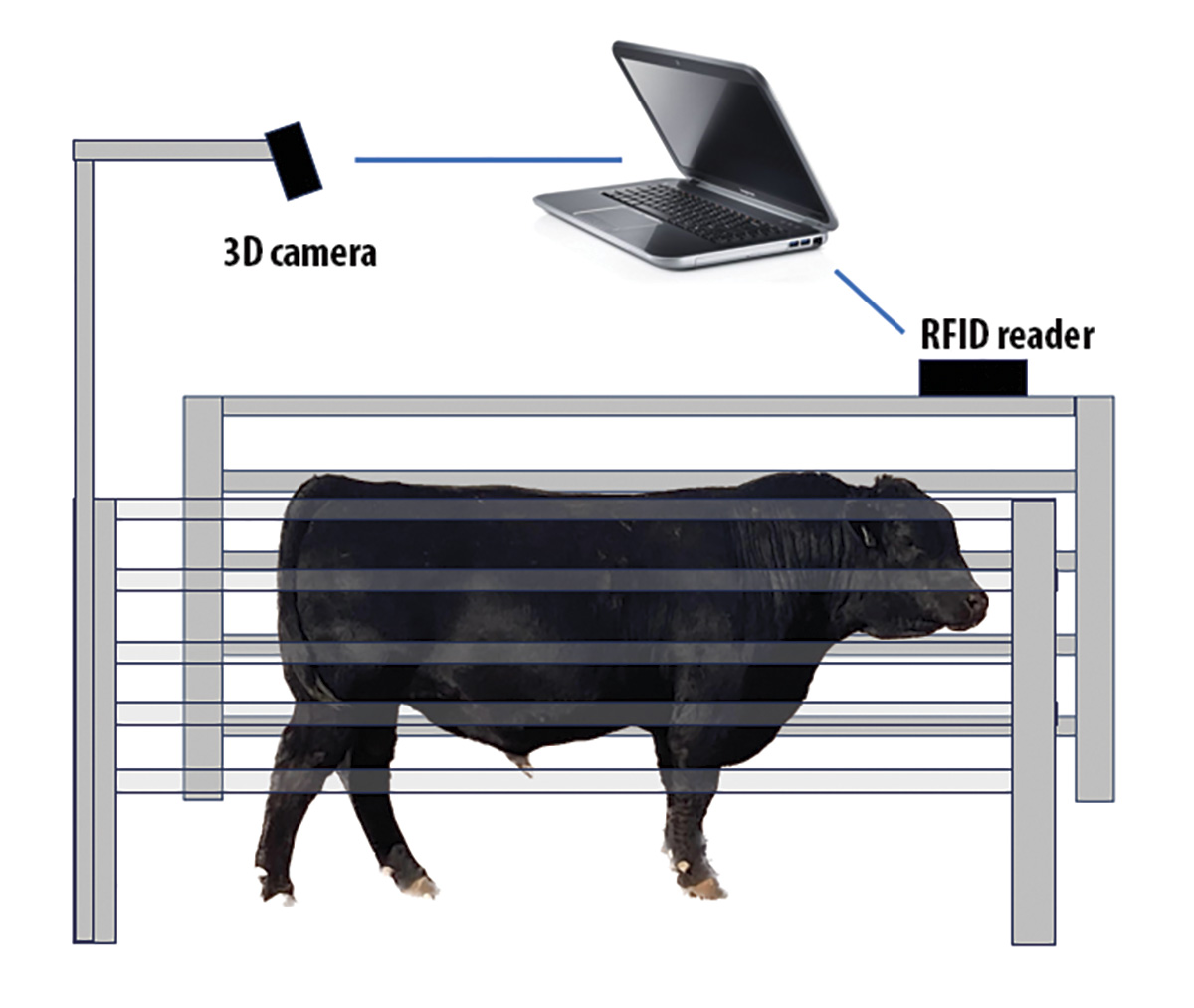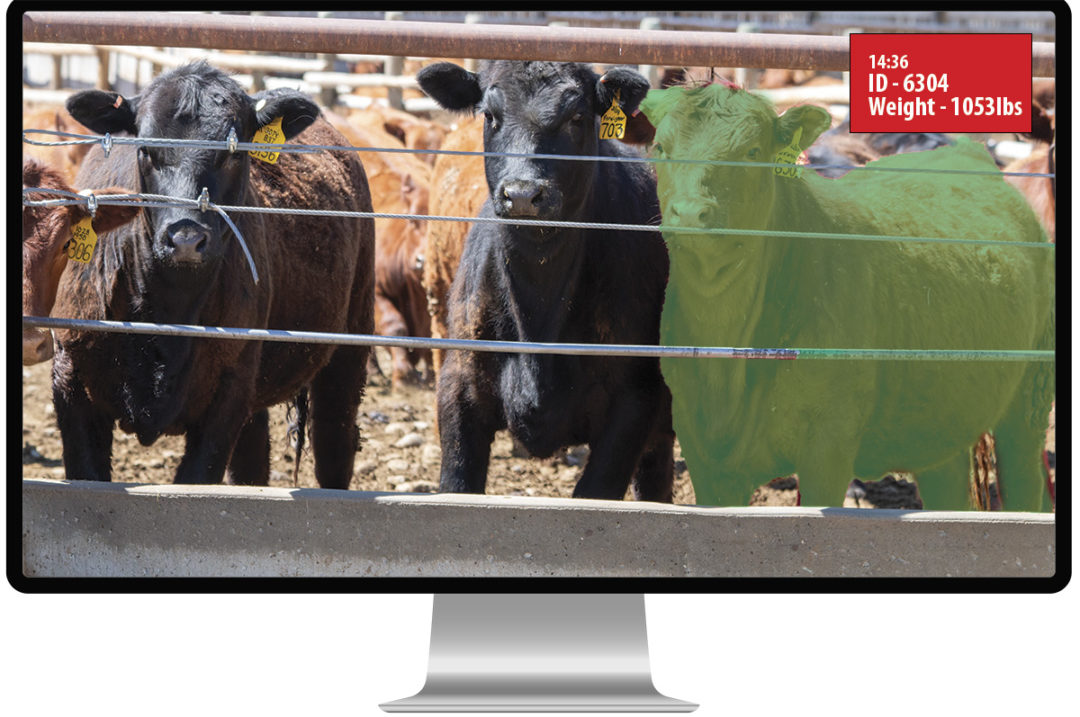In an ever-evolving industry, cattle farming and beef production thrive on innovation, with the pursuit of efficiency, precision and safety as a constant endeavor. Among the essential processes, weighing cattle stands as a cornerstone, holding the key to informed decisions, quality of products and overall profitability. Recent years have steered in a transformative technology set to forever change cattle weighing: 3D cameras. This groundbreaking technology offers cost-effectiveness, safety improvements and, most notably, a substantial reduction in stress on the animals.
Precision weighing for informed decision-making
Traditional scales, while reliable to some extent, are not without limitations. Inaccuracies often arise due to factors such as animal movement and operator errors, which can compromise the reliability of weight data. In stark contrast, 3D cameras emerge as a key innovation providing unparalleled precision. These cameras capture comprehensive data and deliver weight measurements with unmatched accuracy. The precision level attained through 3D cameras empowers ranchers to make highly informed decisions about their cattle, influencing critical aspects like nutrition, health management and market readiness.
Cost is a significant factor in selecting the right weighing method. Conventional cattle scales, while indispensable, can be financially burdensome. The initial purchase cost, setup expenses and ongoing repair and maintenance costs can pose substantial financial challenges to cattle ranchers. Conversely, 3D cameras present a more cost-effective solution, with systems that are relatively affordable, straightforward to install and require minimal maintenance. The long-term savings associated with 3D cameras make them an attractive choice for ranchers seeking efficiency without incurring excessive costs.
Stress reduction
One of the most compelling benefits of 3D cameras is the remarkable reduction in stress experienced by cattle during the weighing process. Traditional weighing methods often necessitate animal confinement in tight spaces or on scales, which can be an extremely stressful experience. When subjected to handling procedures and confined into chutes, cattle often undergo a fight-or-flight response, which can have detrimental effects on their reproductive performance. Surprisingly, the stress experienced by animals introduced into chutes by unfamiliar personnel can be comparable to the stress they endure during branding procedures. However, adopting a calm and gentle handling approach can effectively mitigate this stress. Despite the strong genetic component of temperament in cattle, it is possible to ameliorate their disposition through appropriate handling practices and human interaction.
Researchers in 2012 conducted two comprehensive studies exploring the effects of temperament and acclimation on stress levels and the reproductive performance of beef cattle. In a temperament-focused experiment, their findings indicated that cattle displaying aggressive behavior exhibited elevated levels of plasma cortisol. This aggressive temperament was associated with reduced rates of pregnancy, calving and successful weaning, ultimately resulting in lower calf birthweights and weaning weights. These outcomes align with the results of several other studies, which have also noted a connection between excitable temperament in cows and reduced average daily weight gain, as well as decreased carcass weight in offspring steers.

The diagram shows how the use of a 3D camera can capture the weight of an animal and send it to your computer, allowing for quick and stress-free handling of animals. Image by Alvaro Garcia.
Humaneness and animal welfare
Conducting cattle weighing with traditional scales frequently necessitates proximity between operators and the animals. This close interaction can pose a significant safety risk, given that cattle are known to be unpredictable and, at times, aggressive. 3D cameras eliminate the need for operators to be near the cattle during the weighing process. Operators can safely monitor and control the procedure from a distance, reducing the risk of injuries and enhancing operator safety. This feature not only makes the weighing process more efficient but also significantly enhances safety for both cattle and ranchers.
The humane treatment of animals is a fundamental consideration in modern agriculture. Consumers today demand more humane and ethical treatment of animals, even in the livestock industry. 3D cameras play a vital role in enhancing animal welfare by minimizing stress and potential harm during the weighing process. By keeping cattle unstressed, ranchers are not only producing higher-quality beef but also aligning their practices with the evolving standards of humane and sustainable beef production. This factor has a significant impact on the overall image and reputation of the industry.
Importance of weighing beef cattle often
Weighing cattle frequently is a practice that cannot be overstated. It is crucial for monitoring the growth and development of cattle throughout their lives. Regular weighing allows ranchers to track the progress of individual animals and the herd, providing valuable insights into weight gain, feed efficiency and the overall health of the cattle. Weighing cattle often helps identify growth abnormalities, detect health issues at an early stage and ensure that each animal receives the right nutrition and care.
Consider, for example, a group of steers weighing 500 kilograms that are gaining 300 grams less than they should per day. While this daily amount may seem insignificant, over a 90-day period, they would lose approximately 27 kilograms. Should the steers lose 27 kilograms on average over 90 days, we could calculate the percentage of weight loss to estimate the degree of body condition score (BCS) reduction. As a guideline, we can estimate a decrease of 0.5 BCS units for every 10% to 15% weight loss. If the steers initially weighed 500 kilograms and lost 27 kilograms (equivalent to 5.4% of their bodyweight), they might lose approximately 0.27 to 0.54 BCS units. The significance of this loss will depend on the BCS typically used for marketing cattle. A decrease of 0.5 BCS units would not be as detrimental in steers usually marketed with a BCS of 7 compared to those with a BCS of 5.
In conclusion, the utilization of 3D cameras for cattle weighing offers compelling advantages over traditional scales. These innovative tools provide precise measurements, cost-effectiveness, enhanced safety and a significant reduction in stress for the animals. Frequent weighing of beef cattle is an integral part of this process, enabling ranchers to make informed decisions that influence the quality and profitability of beef production. As technology continues to advance, 3D cameras are poised to become the new industry standard, revolutionizing the beef production landscape. Ranchers and beef producers who embrace 3D cameras for cattle weighing are not only positioning themselves as industry leaders but also contributing to a brighter future for cattle and consumers alike. The integration of this cutting-edge technology isn't just a step forward for efficiency; it's a leap toward more humane, sustainable and high-quality beef production, reflecting the industry's commitment to progress and excellence.








